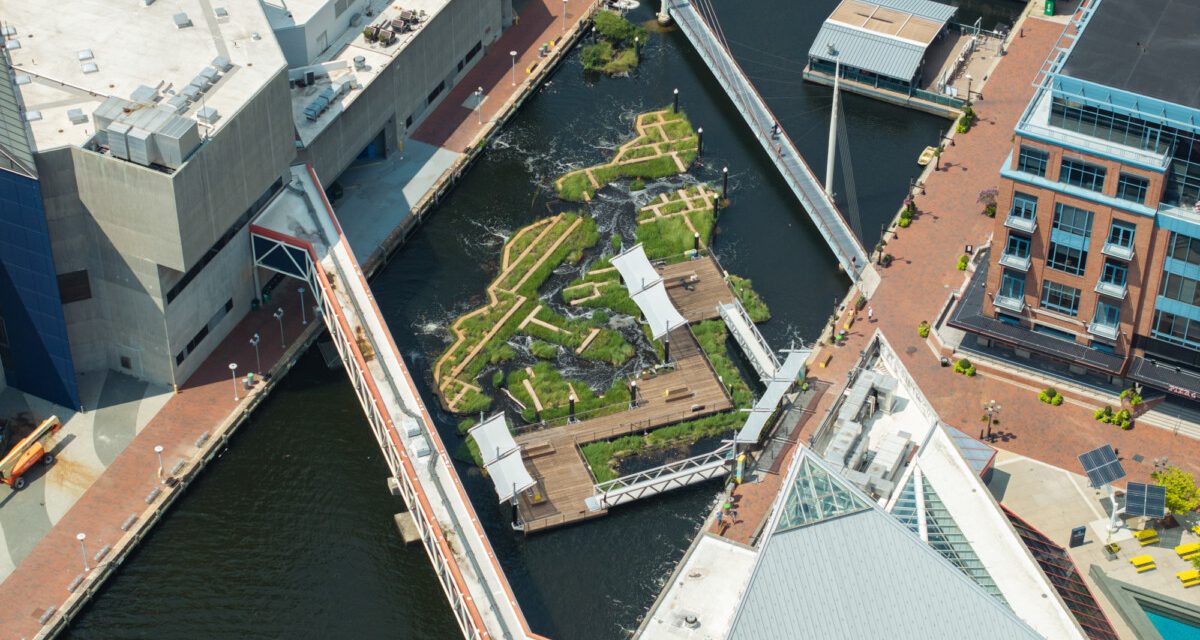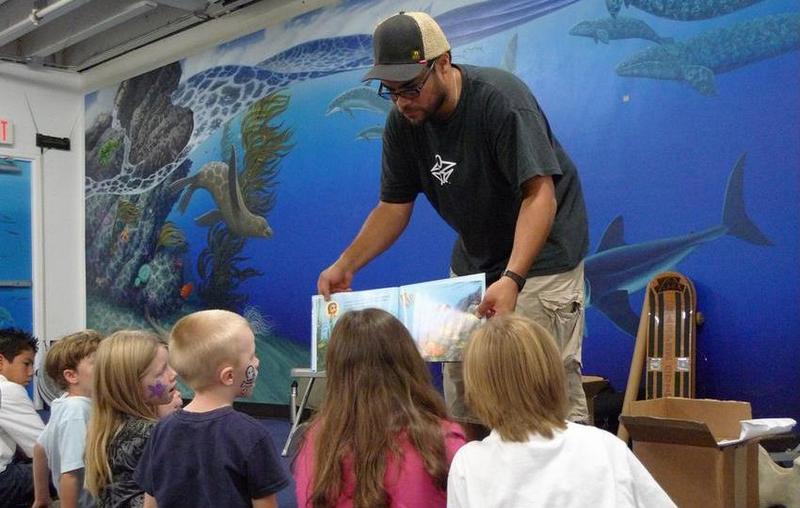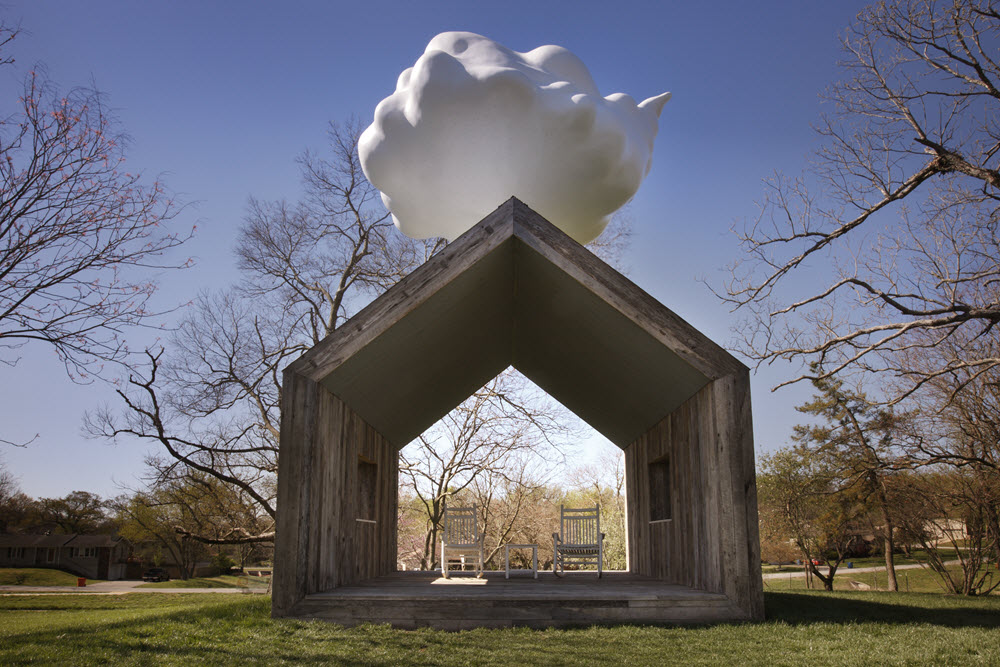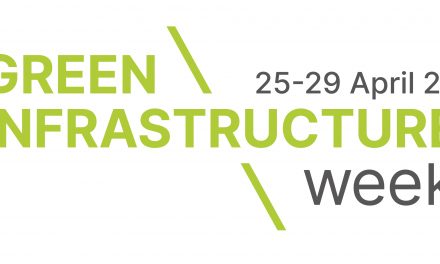Baltimore’s Inner Harbor once was a tidal salt marsh where rain and snowmelt soaked into the soil, naturally filtering water before it flowed into the Patapsco River and Chesapeake Bay. Over time, urban growth replaced this ecosystem with concrete, diverting rainwater over roads and into drains, carrying pollutants into waterways.
In August, Baltimore’s National Aquarium unveiled the Harbor Wetland, a 930-m2 (10,000-ft2) floating wetland designed to recreate the Chesapeake Bay tidal marsh habitat once found in the Inner Harbor. This USD $14 million project features nearly 40,000 native shrubs and marsh grasses and encourages the return of local marine species like blue crabs, American eels, and night herons. Developed by the aquarium’s conservation and exhibit fabrication teams and architect group Ayers Saint Gross (Washington, D.C.), the wetland incorporates sustainable technology to support the ecosystem.
“We hear so much negative talk about Inner Harbor water quality, but there is life in this water and there always has been,” said Jack Cover, General Curator for the National Aquarium, in a release. “My hope is that when people see the life this wetland attracts, from tiny microorganisms to fishes, crabs, water birds and even small mammals like muskrats and otters — all of which we’re already seeing here — they might reconsider our local waterways and perhaps even take better care of our natural surroundings.”
Serving the Community and the Waterway
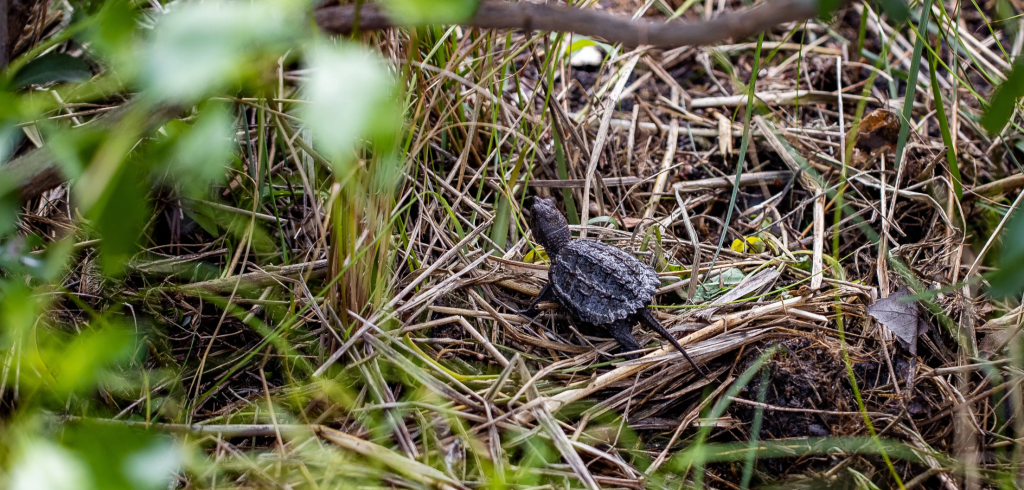
Harbor Wetland serves as both a functional wetland and an interactive public space complete with docks, walkways, shade cover, and signs about the wetland habitat and its seasonal changes. Built with recycled-plastic matting planted with native tidal wetland grasses, the habitat’s roots extend into the water, creating microhabitats for native species while filtering nutrients and contaminants. UV-protected matting sits on air-regulated pontoons, allowing adjustable buoyancy. Water circulates through the shallow channel via compressed air from ceramic airstones, which releases oxygen and keeps the water moving — mimicking natural tidal flows and supporting aquatic life.
The space functions as a hands-on classroom for the National Aquarium’s conservation education programs and serves as a social space enhanced with a mural by Baltimore artist Nether, depicting people collecting water samples alongside the wetland’s native creatures.
Planting a Perfect Habitat
Cordgrass plays a crucial role in Baltimore’s salt marsh ecosystem, with its roots stabilizing sandy soil and absorbing carbon. It provides vital habitat for many species, whether submerged at high tide or exposed at low tide. Algae grow on its stems, feeding periwinkle snails during low tide, which then become prey for fish when the grass is submerged. The dense stems also shelter small creatures like juvenile blue crabs from larger predators. In the Harbor Wetland, floating islands of cordgrass and other native plants play an important role in removing excess nitrogen from the harbor. Growing hydroponically, these plants absorb nutrients directly from the water. Excess nitrogen, originating from polluted stormwater runoff and Baltimore’s aging wastewater systems, often fuels algal and bacterial blooms that harm fish, turtles, crabs, birds, and other wildlife.
A Developing Project
The Harbor Wetland project evolved from the earlier Waterfront Campus Plan, which inspired a 18-m2 (200-ft2) floating wetland prototype in 2010. This initial prototype marked the first use of floating wetland technology in a U.S. brackish tidal system. However, it faced setbacks, including overuse by Canada geese, invasive dark false mussels, and a failing anchor system, leading to its retirement in 2013. Two more versions were installed and later removed due to similar challenges. Using insights from these early prototypes, the aquarium designed a custom floating wetland for the Inner Harbor, culminating in a fourth, 37-m2 (400-ft2) prototype in August 2017, which became the model for today’s Harbor Wetland.
Top image courtesy of Baltimore’s National Aquarium

ABOUT THE AUTHOR
Michelle Kuester is a staff member of the Water Environment Federation, where she serves as Associate Editor of Stormwater Report and Water Environment & Technology magazine. She can be reached at mkuester@wef.org.

